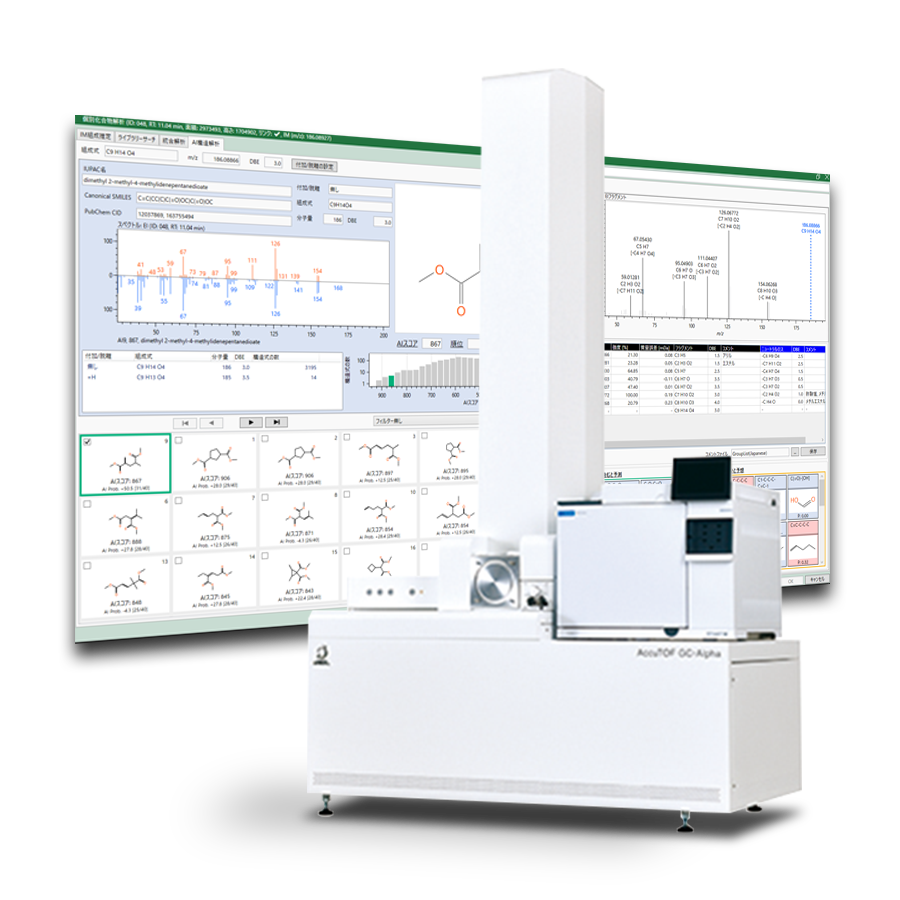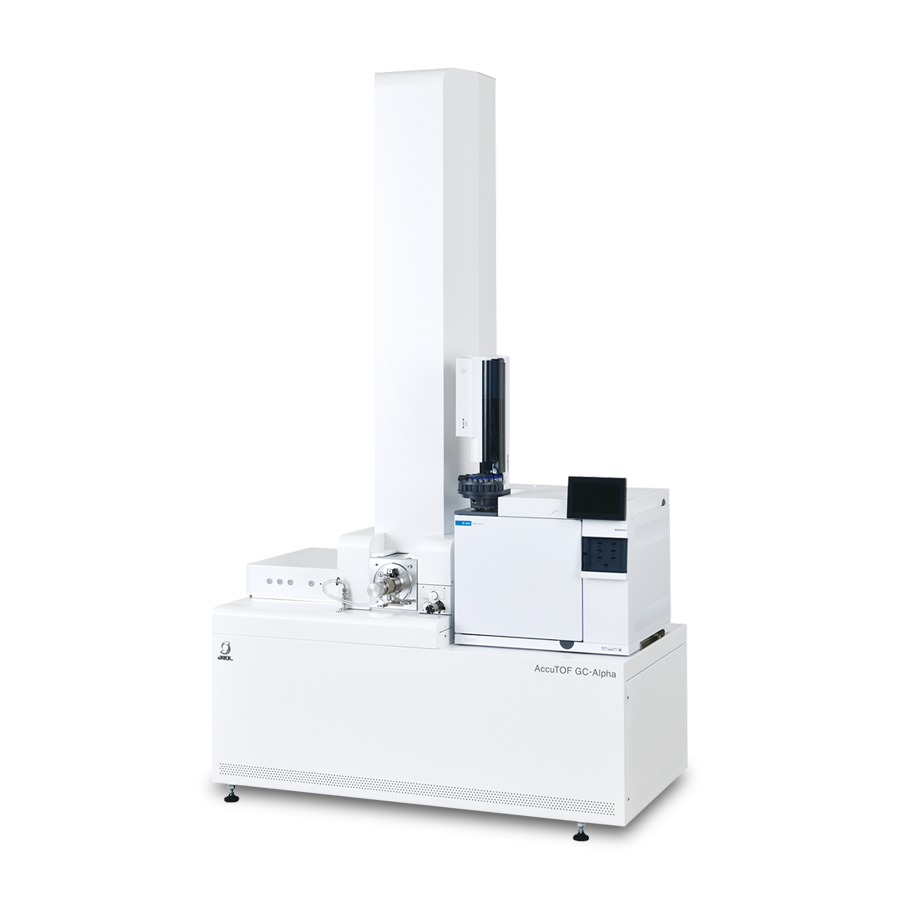msFineAnalysis AI Novel Qualitative Analysis Software for JMS-T2000GC with AI Structural Analysis
JEOL NEWS Vol.58 No.1
Ayumi Kubo, MS Business Unit, JEOL Ltd.
JEOL developed msFineAnalysis as qualitative analysis software for our gas chromatograph time of flight mass spectrometer (GC-TOFMS). We implemented deconvolution detection, variance component analysis, and other features in the software through updates. We have recently developed a new version of the series called msFineAnalysis AI. msFineAnalysis AI is equipped with a structural analysis method using artificial intelligence (AI), called “AI structural analysis.” AI structural analysis enables the identification of molecular formulas as well as structural formulas of compounds that are not registered in the NIST 20 library (unknown compounds). The workflow of AI structural analysis is as stated below.
First, msFineAnalysis’s integrated analysis function identifies the molecular formula of an unknown compound. Next, based on the identified molecular formula, structural formula candidates are extracted from PubChem, the database containing over 100 million compounds. The AI predicts electron ionization (EI) mass spectra from the extracted structural formula candidates. Then, the structural formula candidates are ranked by comparing the predicted mass spectra with the measured mass spectrum. Finally, a candidate that ranks first is adopted as the analysis result.
Using the NIST 20 library, we trained the AI to predict mass spectra from structural formulas and evaluated its accuracy. From the results of accuracy evaluation, we confirmed that AI structural analysis is useful in the structural analysis of unknown compounds. In this report, we will introduce features of msFineAnalysis AI and provide our evaluation results.
First, msFineAnalysis’s integrated analysis function identifies the molecular formula of an unknown compound. Next, based on the identified molecular formula, structural formula candidates are extracted from PubChem, the database containing over 100 million compounds. The AI predicts electron ionization (EI) mass spectra from the extracted structural formula candidates. Then, the structural formula candidates are ranked by comparing the predicted mass spectra with the measured mass spectrum. Finally, a candidate that ranks first is adopted as the analysis result.
Using the NIST 20 library, we trained the AI to predict mass spectra from structural formulas and evaluated its accuracy. From the results of accuracy evaluation, we confirmed that AI structural analysis is useful in the structural analysis of unknown compounds. In this report, we will introduce features of msFineAnalysis AI and provide our evaluation results.
Solutions by field
Electrical / Electronic Component
Related products
Are you a medical professional or personnel engaged in medical care?
No
Please be reminded that these pages are not intended to provide the general public with information about the products.


